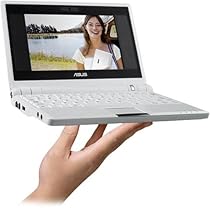A study sponsored by the Australian Computer Society has shown that computers and telecommunications equipment in Australia generated 7.94Mt of carbon dioxide in 2005, 1.52% of national emissions. The ACS issued a Policy Statement for Green ICT, which includes suggestions on initiatives ICT professionals, government, consumers and ICT manufacturers can take to help reduce carbon dioxide emissions attributable to the use of ICT equipment. Tom Worthington, chair of the ACS Green IT Group, will discuss options available and demonstrate a new low power "thin client" computer using a "carbon neutral" processor.
The ICT Environmental Sustainability Group ("Green ICT") brings together professionals interested in balancing economic and environmental aspects of information technology and telecommunications. It is a special interest group of the Australian Computer Society. The group aims to hold joint meetings with other professional bodies interested in technology, the environment and sustainability.
Zonbu Thin Client Linux Computer for Consumers
Zonbu , are offering a thin client Linux computer for $US249.00. They include a data storage service and the application software in the price. If you pay for more online storage on a long term plan the cost of the hardware is lower.
The hardware is a small PC (apparently made by MSTI and sold as the "eBox mini Green PC"):
From: Zonbu, Wikipedia, 2007
- 1.2 GHz Via Eden CPU (C7 Esther core)
- VIA CX700M chipset
- 512 MB RAM
- Ethernet 10/100 Mbit/s
- PS/2 keyboard and mouse ports, VGA display port and 6 USB 2.0 ports
- 4 GB CompactFlash local storage
- Graphics up to 2048 x 1536 with 16 million colors – hardware graphics and MPEG2 acceleration
In effect, the computer is sold in a similar way to a mobile phone plan: the more you pay for the monthly service and the longer you commit to the cheaper the hardware is. The service comes with OpenOffice.com and other typical Linux desktop software. A broadband Internet connection for the unit to be usable. This might be a good option for some home users and micro businesses. The business could simply plug the computer in and use it: if it breaks, then get another one, with the data stored on the remote on the server.
Larger businesses and government agencies could use the same hardware, but supplying their own servers for data and backup. Companies which use electronic document management systems could use those systems to store corporate documents created by the client computers.
Zonbu claim carbon neutral computer:
From: Good things come in small boxes, Zonbu, 2007
Via claim Carbon Free Computing:
From: VIA Carbon Free Computing - Breathe Easier!,VIA, 2007
Thin client computers can offer benefits beyond environmental ones. As an example thin clients can replace desktop PCs for those workers only needing standard office applications. The thin client can also replace a digital telephone. Corporate applications, such as payroll and finance can be provided to the desktop using the web browser and interactive web applications, such as AJAX. Corporate documents can be retained in central file servers and Electronic Document Management Systems. This removes the need to maintain as much software on the desktop and increases the security of corporate data.
Servers can be consolidated into efficient and easier to manage data centers. These can take advantage of low power disks, processors and green power.
As an example, the new federal government could institute a program in early 2008 to provide a standard desktop to all staff, including office applications, email and voice communications. All agencies would be provided with an EDMS to hold their corporate documents. Any federal public servant or contractor could then work from any federal government office. When a desktop unit failed, a replacement could be sent by courier and user installed, with the broken unit returned for repair. No data would be lost in the process, as none would be stored on the desktop.





